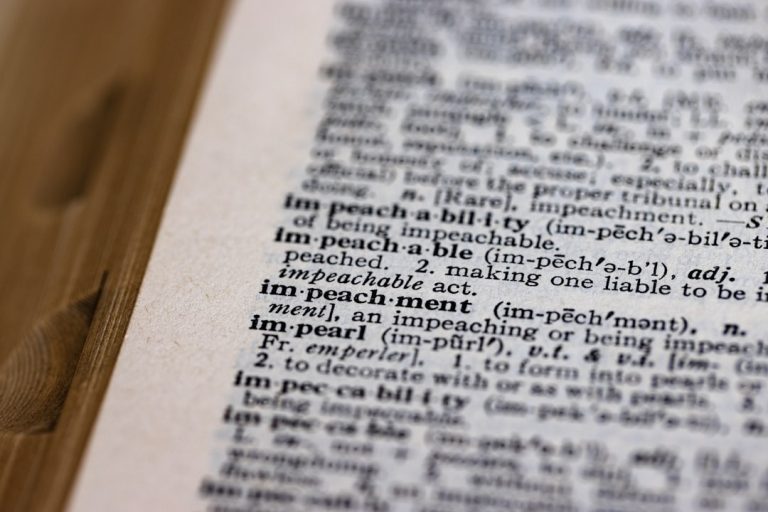
Punctuation serves as the backbone of written communication, providing clarity and structure to our thoughts. In American English, punctuation marks are not merely decorative; they play a crucial role in conveying meaning and ensuring that sentences flow logically. The use of punctuation can alter the interpretation of a sentence entirely, making it essential for writers to understand the rules governing their use.
From the simple period to the more complex semicolon, each mark has its own set of guidelines that dictate how it should be employed in writing. American English punctuation is characterized by specific conventions that differ from other forms of English, such as British English. For instance, the placement of quotation marks and the use of commas in relation to them can vary significantly.
Understanding these nuances is vital for anyone looking to master American English writing. This article will delve into the intricacies of punctuation spacing, a topic that often goes overlooked yet is fundamental to achieving polished and professional writing.
Key Takeaways
- American English punctuation follows specific rules for spacing after punctuation marks.
- Proper spacing is important for readability and clarity in writing.
- Use a single space after punctuation marks, including periods, commas, and colons.
- When using quotation marks and parentheses, ensure there is no extra space between the punctuation and the enclosed text.
- Dashes and hyphens should have consistent spacing before and after them for a professional look.
Understanding the Importance of Spacing in Punctuation
Spacing in punctuation is not just a matter of aesthetics; it significantly impacts readability and comprehension. Proper spacing helps to delineate ideas and separate thoughts, allowing readers to navigate through text with ease.
For example, consider the difference between “Let’s eat, Grandma!” and “Let’s eat Grandma!” The absence of a comma changes the entire meaning of the sentence, illustrating how crucial proper punctuation—and by extension, spacing—can be. Moreover, spacing contributes to the overall professionalism of a written piece. In academic and business writing, attention to detail is paramount.
A document riddled with spacing errors can undermine the credibility of the author and distract from the content itself. Readers may perceive such errors as a lack of care or expertise, which can detract from the message being conveyed. Therefore, understanding and applying correct spacing rules is essential for anyone who wishes to communicate effectively in American English.
Mastering the Use of Spaces after Punctuation Marks

One of the most fundamental aspects of punctuation spacing is knowing when to include spaces after punctuation marks. In American English, the general rule is to place one space after a period, comma, colon, or semicolon before starting the next word. This practice enhances readability by providing a clear visual break between sentences and phrases.
For instance, in the sentence “I enjoy reading; it helps me relax,” the semicolon is followed by a single space before “it,” making it easy for readers to identify the two independent clauses. However, this rule can sometimes lead to confusion, especially when transitioning from typewritten documents to digital formats. In the past, it was common practice to use two spaces after a period at the end of a sentence, a convention that originated from typewriter usage where monospaced fonts made it difficult to distinguish between sentences.
Today, with proportional fonts being standard in most digital writing environments, the consensus has shifted towards using a single space after periods. Writers should be mindful of this evolution in punctuation standards to ensure their work aligns with contemporary practices.
Proper Spacing for Quotation Marks and Parentheses
| Spacing Type | Example | Proper Spacing |
|---|---|---|
| Quotation Marks | “Hello, world!” | Use a space before and after the quotation marks: ” Hello, world! “ |
| Parentheses | (5 + 3) * 2 | Use a space before and after the parentheses: ( 5 + 3 ) * 2 |
Quotation marks and parentheses are unique punctuation marks that require specific attention when it comes to spacing. In American English, there are no spaces between quotation marks and the text they enclose. For example, in the sentence “She said, ‘Hello,'” there should be no space between the opening quotation mark and “Hello,” nor between “Hello” and the closing quotation mark.
This rule applies regardless of whether the quotation is a single or double quote.
When incorporating parentheses into a sentence, they should directly follow the preceding word or punctuation mark without any intervening space.
For instance, “The results (which were surprising) were published last week” adheres to this guideline. However, if a sentence ends with a parenthetical statement followed by a period, the period should be placed outside the closing parenthesis: “He was late (as usual).” This attention to detail ensures that quotations and parenthetical information are seamlessly integrated into sentences.
Guidelines for Spacing with Commas, Periods, and Colons
Commas, periods, and colons are among the most frequently used punctuation marks in American English writing, making their spacing particularly important for clarity. After a comma or period, writers should always include one space before continuing with the next word. For example: “I bought apples, oranges, and bananas.” The comma is followed by a single space before “and,” which helps delineate the items in the list clearly.
Colons also follow this same spacing rule. When introducing a list or elaborating on a point with a colon, one space should be placed after the colon before continuing with text. For instance: “She brought three items: a notebook, a pen, and an eraser.” The space after “items:” allows readers to easily identify that what follows is an elaboration on what was previously mentioned.
Adhering to these spacing guidelines not only enhances readability but also reflects a writer’s attention to detail.
Spacing Rules for Dashes and Hyphens

Types of Dashes
In American English, there are two types of dashes: the en dash (–) and the em dash (—). The en dash is typically used to indicate ranges, such as “The years 2000–2020”, and does not require spaces on either side when used in this context.
Using Dashes for Emphasis and Interruption
Conversely, when using an em dash to create emphasis or indicate an interruption in thought, such as “I was going to—well, never mind”, it is standard practice to place no spaces before or after the dash.
Hyphens in Writing
Hyphens (-) are used to connect words or parts of words, such as “well-known”. Like dashes, hyphens do not require spaces on either side when they connect words within a compound adjective or phrase. For example, “The well-known author gave a lecture.” However, when hyphens are used at the end of a line to indicate that a word continues on the next line, it is important not to leave any spaces before or after the hyphen itself.
Common Mistakes to Avoid in American English Punctuation Spacing
Despite being fundamental aspects of writing, punctuation spacing rules are often overlooked or misunderstood. One common mistake is failing to include spaces after commas or periods consistently. This inconsistency can lead to confusion for readers who may struggle to parse sentences correctly.
For instance, writing “I like apples,I like oranges.” without proper spacing can create an awkward reading experience. Another frequent error involves incorrect spacing around quotation marks and parentheses. Writers may inadvertently add spaces where they shouldn’t or neglect to include them where they are necessary.
For example: “He said , ‘Hello’.” incorrectly places a space before the comma while omitting it before the quotation mark. Such mistakes can detract from the professionalism of writing and may lead readers to question the author’s attention to detail.
Tips for Improving Punctuation Spacing in Your Writing
Improving punctuation spacing requires both awareness and practice. One effective strategy is to read your writing aloud; this can help you identify awkward pauses or areas where spacing may be incorrect. Listening to how sentences flow can provide insight into whether your punctuation enhances or hinders readability.
Additionally, utilizing grammar-checking tools can be beneficial for catching common spacing errors before finalizing your work. Many word processing programs offer built-in grammar checks that highlight potential issues with punctuation spacing. However, while these tools can be helpful, they should not replace careful proofreading by the writer themselves.
Finally, familiarizing yourself with style guides such as The Chicago Manual of Style or The Associated Press Stylebook can provide authoritative guidance on punctuation rules specific to American English. These resources offer comprehensive explanations and examples that can clarify any uncertainties regarding spacing conventions. By actively engaging with these strategies and resources, writers can enhance their understanding of punctuation spacing in American English and improve their overall writing quality.
If you are interested in improving your English language skills, you may also want to check out this helpful guide on how to improve English reading for English learners. This eBook offers valuable tips and strategies to enhance your reading comprehension and fluency. You can find more information on this topic at ESL Institute.
FAQs
What is American English punctuation?
American English punctuation refers to the set of rules and conventions used to punctuate written English in the United States. This includes the use of commas, periods, quotation marks, and other punctuation marks.
What is spacing with punctuation in American English?
Spacing with punctuation in American English refers to the convention of placing a single space after most punctuation marks, such as periods, commas, colons, and semicolons. This is in contrast to some other languages and typographic traditions, which may use different spacing conventions.
Are there any exceptions to the spacing with punctuation rule in American English?
Yes, there are a few exceptions to the spacing with punctuation rule in American English. For example, there is no space before or after an em dash (—) or an en dash (–). Additionally, there is no space before a comma, period, question mark, or exclamation point when it is used within a quotation mark.
Why is spacing with punctuation important in American English?
Spacing with punctuation is important in American English because it helps to improve the readability and clarity of written text. Consistently applying spacing rules can make it easier for readers to understand the structure and flow of a sentence or paragraph.
Where can I find more information about American English punctuation and spacing with punctuation?
More information about American English punctuation and spacing with punctuation can be found in style guides such as The Chicago Manual of Style, The Associated Press Stylebook, and The MLA Handbook. Additionally, many online resources and writing guides provide detailed information on punctuation rules and conventions.






